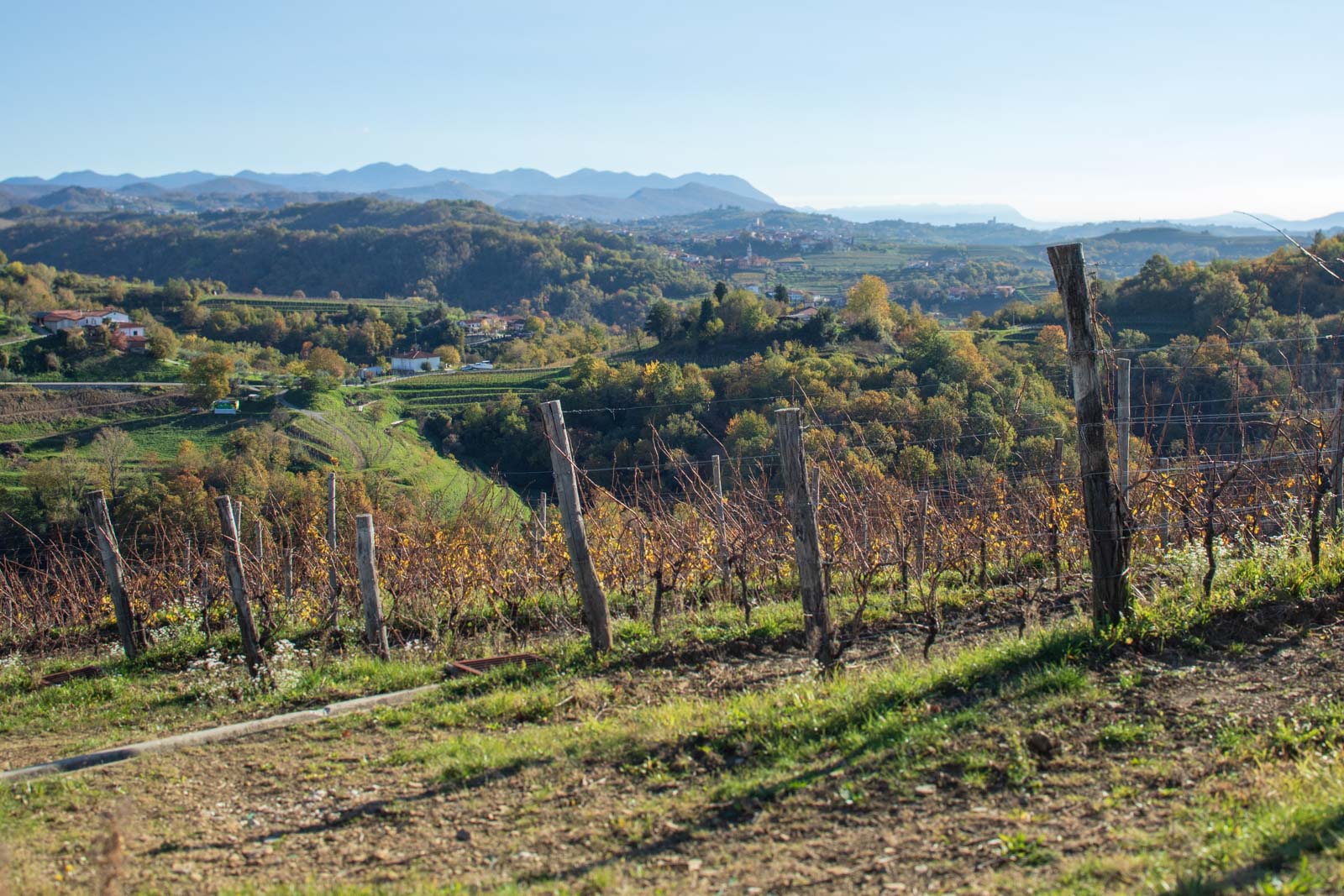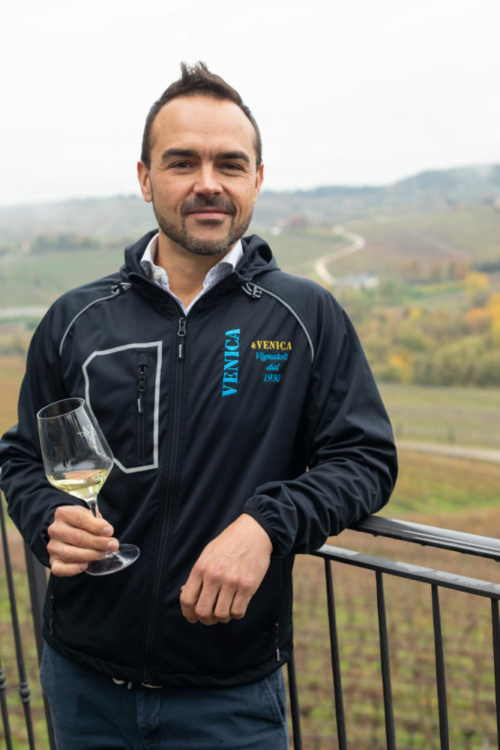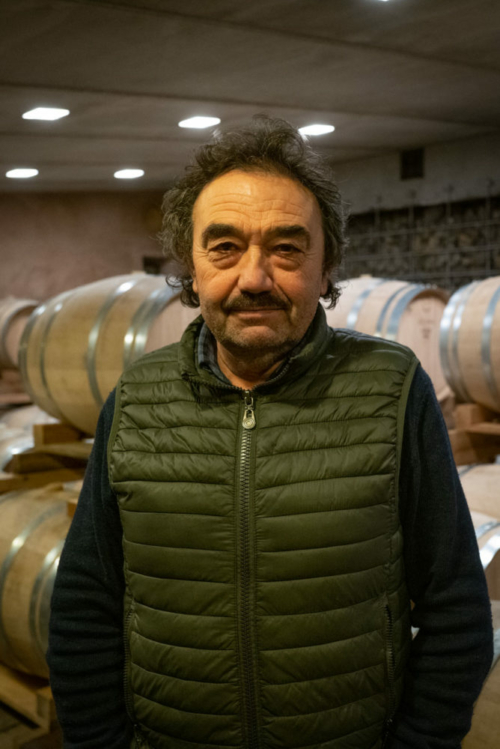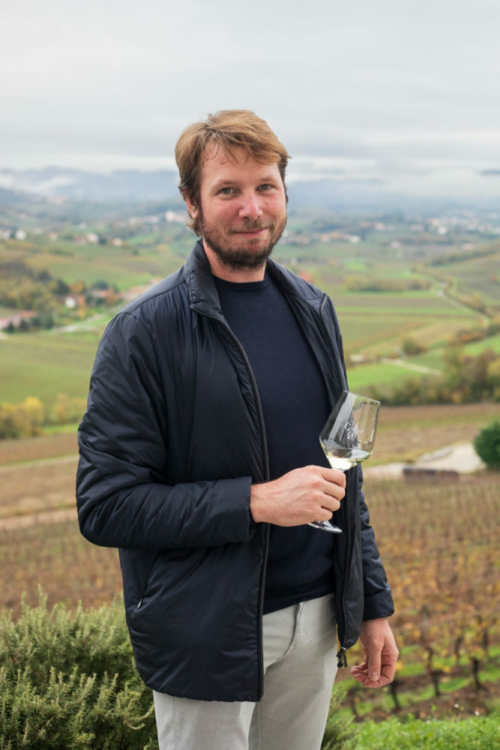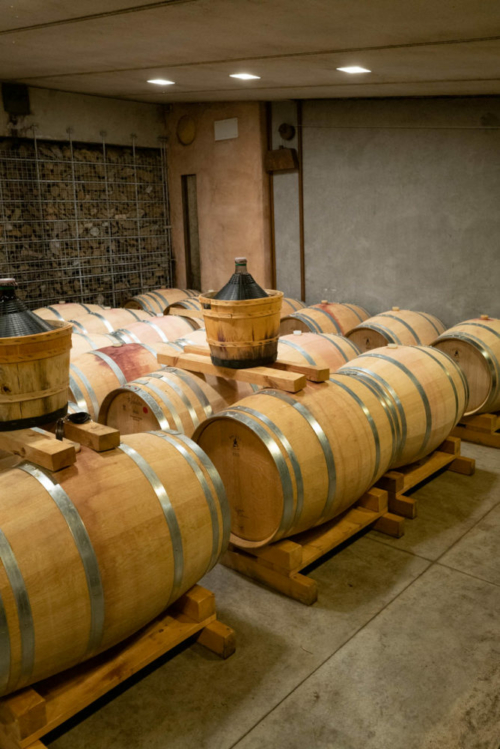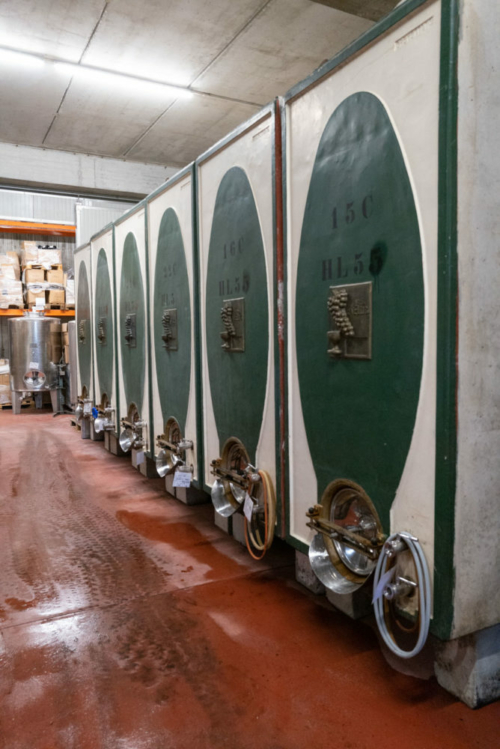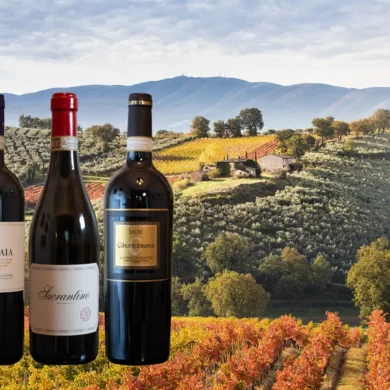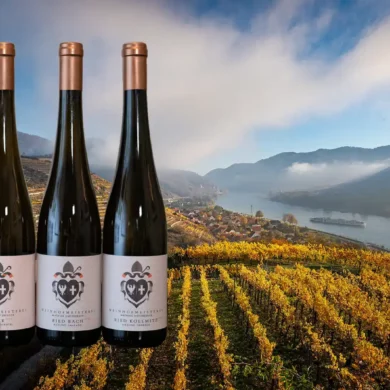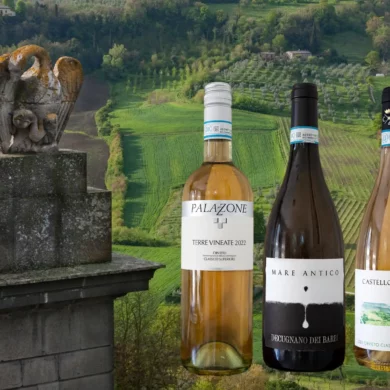Sometimes greatness is hiding in plain sight. In professional sports, it could be a late-round draft pick who emerges as a superstar. In jazz, a drummer who keeps perfect time for an hour and then is handed the spotlight for a thrilling solo. Of all the white wines in Italy, Friulano fits this character: place it in the ensemble and it will keep time nicely. But give it room to roam, and it will surprise and beguile.
I will admit that for years, I never thought much of Friulano. Bright, mineral, functional … “yes, and so are eight or nine dozen other white wines.”
Something magical happens with Friulano when it is grown on a prime hillside vineyard and given three or four years in the bottle.
But something magical happens with Friulano when it is grown on a prime hillside vineyard and given three or four years in the bottle. It seems that the just-released wines, regardless of their provenance, are agile and fresh if a little tight. They are delicious, but their secrets are hidden within. Only time seems to relax Friulano, and it is here that this wine starts to stand out, shifting into one of the most beautiful forms in the white-wine world.
I recently visited Friulano’s heartland, the Collio, as a guest of the winemaker’s consortium (I also dabbled independently in the neighboring Friuli Colli Orientali). With this story in mind, I wanted to know if Friulano could be more than just the rhythm section of a meal. In a region that quietly makes some of the best Sauvignon Blanc and Pinot Grigio in the world, why were producers pushing Friulano to be at the front of the band? And could the locals’ love of this grape translate into a kind of international “cult” success that has, so far, been largely elusive?
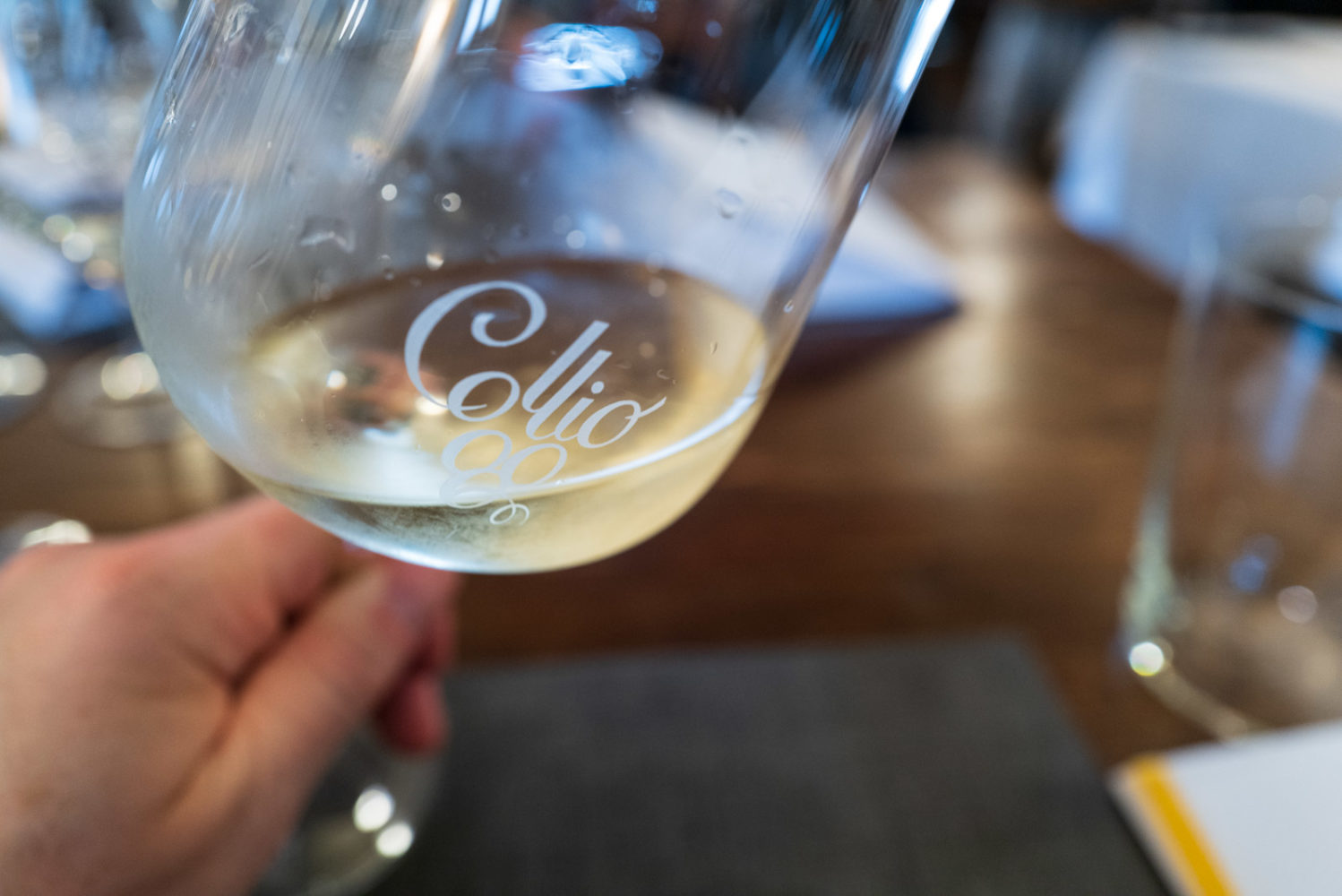
What is Friuliano?
Friulano is a white wine made in Friuli, Italy from the Tocai Friulano grape, which is genetically identical to Sauvignonasse (Sauvignon Vert). The wines are pale and straw colored with a faint greenish tinge, and their aromas are delicate but far from whispery. An acidity that is substantial (but never overbearing) lends these wines a wonderful momentum on the palate. It is this quality that largely accounts for Friulano’s versatility at the table.
Friulano is also quite terroir-sensitive. Warmer, drier sites can yield wines of higher extract and power, while those from well-drained, cooler and windier sites can feel more linear and crisp.
Three Reasons to Try Friulano
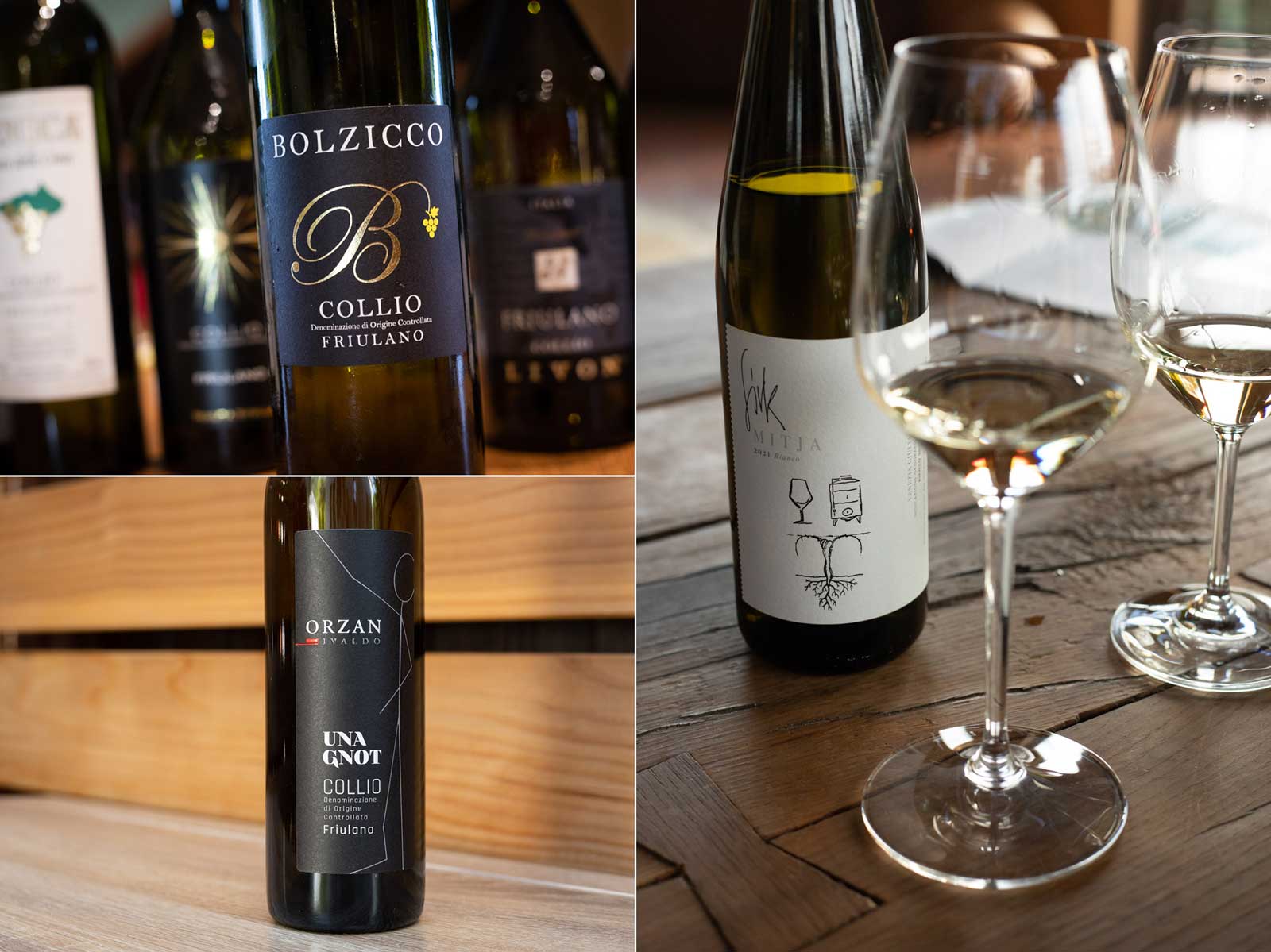
1. Versatility in the Kitchen
Friulano may be one of the world’s most versatile white wines. Its “just right” levels of aroma, acidity, body and alcohol make it a friendly companion with anything from miso soup to the iconic Friulian pairing: thinly-sliced prosciutto.
But don’t focus too much on exact pairings. Experiment and see what Friulano can stand up with. It does not break easily.
2. The Gateway to One of Italy’s Most Vital Wine Areas
Friuli-Venezia Giulia is precious. Scenically beautiful, culturally complex, and with a unique cuisine compelling enough to match any in Italy, the area is often overshadowed on a touristic level by nearby Venice and the Veneto.
In some circles, the most famous wines are macerated “orange wines,” but the true ambassador — because it unifies more of Friuli’s wine scene than any other grape — is Tocai Friulano.
Friuli’s Ribolla Gialla and Malvasia can be magical. The same can be said for the area’s Sauvignon Blanc and Pinot Grigio. But on their own, these wines might seem like one-offs without a Friulano context. Get to know this wine and its various iterations first, and you’ll have a better foundation for unlocking the complete picture of Friuli.
3. It Will Change Your Cellaring Strategy
We often get hung up on red wines that need 10+ years of cellaring to reach their “peak form.” But really: aren’t you sick of waiting that long?
In Friulano, we have a white wine that relaxes into a vividly complex, compelling form just three to four years after the release date. Even one extra year can open the door to more expressiveness. Since most Friulano are released immediately after vintage, this wouldn’t seem to be the case. Yet producers face this conundrum: few white wines are thought to be age-worthy by consumers. Do you delay the release of your Friulano and risk having it seen as “past its prime” when in fact it is only coming into form?
For consumers, this represents opportunity. Rather than building out another shelf to wines that will rest until your kids are grown adults, devote it to a rotation of Friuliano, and watch your white wine enjoyment increase exponentially.
About the Wines of Tocai Friulano
History
The origin stories of wine grapes are notoriously filled with holes, and Tocai Friulano is no exception. But we do know this: the grape is originally from France, yet the first records of a “Tokay” vineyard in Friuli are from way back in the 12th century (sourced from Native Wine Grapes of Italy by Ian d’Agata). That is certainly a long enough time period to consider Friulano an autochthonous variety in Friuli. What is more, other key French varieties — such as Sauvignon Blanc, Merlot and even Cabernet Franc, which today have a substantial toe-hold in Friuli’s vineyards — were not introduced until the late 1800s.
During a seminar on Friulano last month, wine writer and educator Matteo Bellotto noted that Tocai Friulano’s proliferation and endurance in Friuli goes back to one simple thing: “we didn’t have the ability for clean water until 1956.” People drank wine for hydration and to quench thirst, because it was a safer alternative than local water. Tocai Friulano, he noted, was the grape of choice not because of quality, but necessity: its high yields allowed farmers to satisfy demand, which back then called for twice the amount of wine that is consumed in Friuli today. (This nourishment of ancestors is one of many reasons that today’s producers show such a fondness for the grape.)
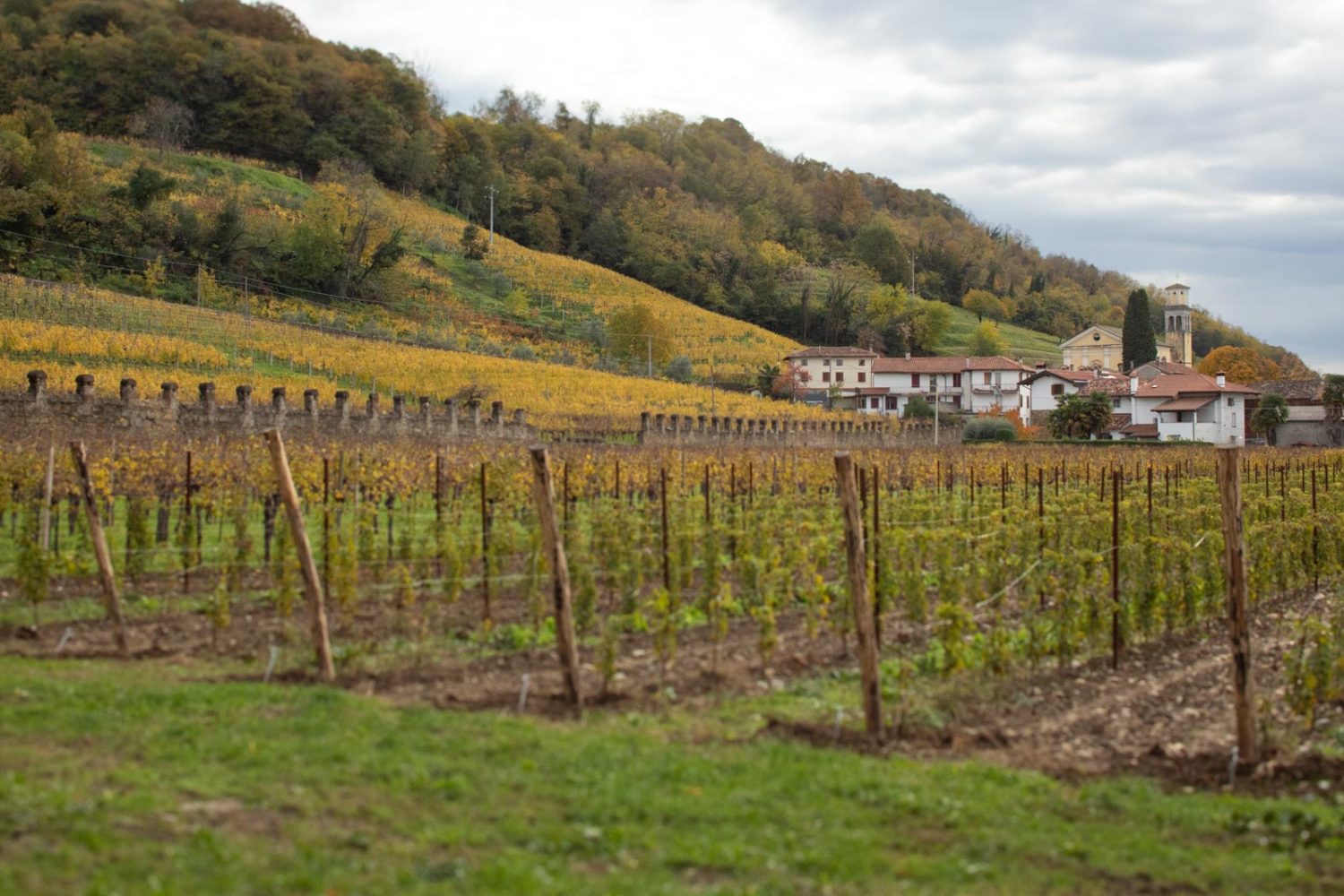
However, Nicola Manferrari of the famed estate Borgo del Tiglio told me that when he started making wine, those from Tocai Friulano were never served to a guest — at least not to a guest you would want to impress. Sauvignon was the wine for that. But now, Friulano is getting its due. Producers like Manferrari found themselves with ample acreage of Friulano, often on prime vineyard land. Yet, they didn’t always have the means to replace and replant these vines with something more internationally savvy. It was sort of a “may as well make something special with it” mantra. And what has emerged, according to him, is truly special: a degustazione wine.
“People are now realizing the power of Friulano,” Manferrari told me and my interpreter. “Friulano is just perfect. It goes along with anything you’re having, especially sour, salty and bitter tastes. It actually pairs harmonically in such a situation because it has the ability to sweeten up and soften those strong flavors.”
Today, Friulano has gained ground in Italian wine circles because of a few landmark bottles that have emerged as some of the best white wines in Italy: Borgo del Tiglio’s Ronco della Chiesa, Miani’s “Filip” and “Buri,” and Raccaro’s “Rolat.”

Tokaj? Not Anymore.
The wine used to be called Tocai or Tokaj, but in 2007, the Hungarian wine industry successfully petitioned the European Union to prohibit the use of this name on wine labels from any region outside of Tokaj, Hungary. The negative effect on sales for Tokaj Friulano was immediate. However, the name was allowed to stay on the national grape registry, so when producers talk about “Tocai” they’re referring to the grapevine. (Well, usually. There are still some bitter feelings over the matter. To many winemakers of a certain generation, the wines will always be Tocai or Tokaj to them).
Terroir
The main area of focus for Friulano is the Collio DOC, but there are also several great examples from the adjacent, more northerly Friuli Colli Orientali DOC. Friulano can be found in other Friuli appellations, too, but for wines of distinction, Collio and Friuli Colli Orientali are where it is at.
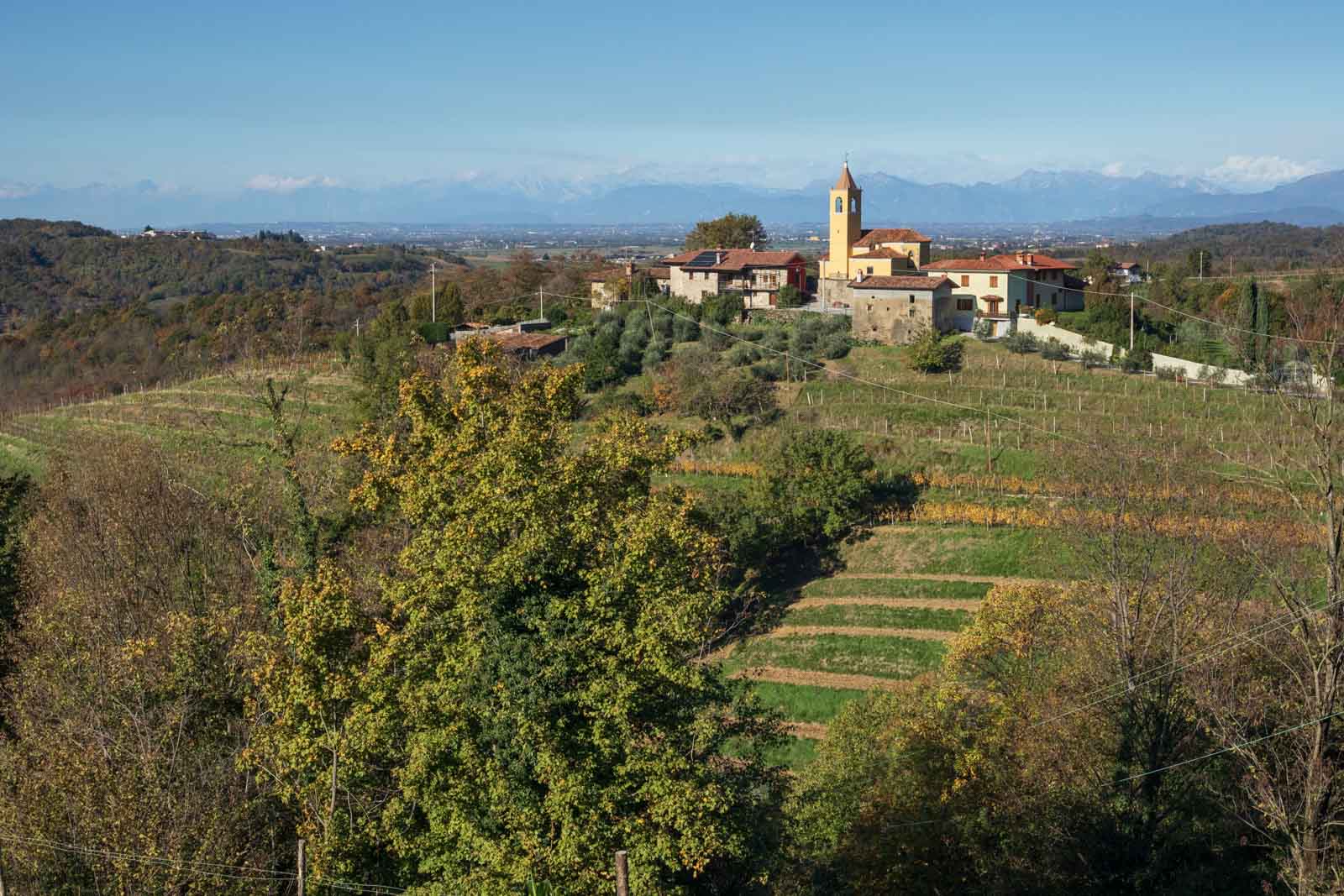
One reason why lies underground: both DOCs are permeated with ponca, a flysch soil of alternating layers of marl and sandstone which is particularly adapt at draining away the more than 3 meters of rainfall the region endures annually. This is the rainiest place in Italy and without ponca, Friulano’s energy on the palate takes a dip.
But there is another key factor to Tocai Friulano’s success here: the Bora wind, which flows from the Carnic Alps in the north, over the vineyards of Friuli Colli Orientali and Collio, and toward the Carso. Meanwhile, warm breezes from the nearby Adriatic Sea to the south collide over the vineyards, and this atmospheric tension not only dries the grape clusters of moisture, but it also helps with acidity and phenolic development.
Collio is a region of enormous diversity in terroir, and as a result, ensuing styles. In fact, in Collio, Tocai Friulano plays two roles: as a varietal wine, and as a key partner in many Collio Bianco blends. Around Brazzano and Cormons, you will find some of Tocai Friulano’s biggest champions — producers who have been espousing the virtues of the grape as producing possibly the region’s top wine, and who believe that it deserves to be the primary blending grape in Collio Bianco. This is the warmest spot in Collio, the apex in the bending hills that face south toward the sea.
But as you move further east, toward San Floriano del Collio and Oslavia, the narrative shifts more towards Ribolla Gialla, largely because Ribolla’s thick skin can better handle the wet weather in that corner of the region.
Heading north, the profile changes — according to Giampaolo Venica of the northern Collio winery Venica e Venica — because of the distance to the sea and how that effects wind patterns. “In the north we have the wind during the day instead of night … So a wine from here should be more crispy, more fresh. Down [south in Brazzano and Cormons] you get more oily [texture], more fat, more structure.”
However, he noted that Tocai Friulano’s demands are higher in his area, calling for more specific site selection. That is because of cloud layers in the morning. To achieve its best results up north, Tocai Friulano needs higher elevation vineyards above the morning fog where it can get the right amount of warmth during the day. Plant too high, Venica noted, and frost becomes a dangerous factor.
A White Wine That Can Age
“Friulano, for my winery, is the most important wine that we have,” said Luca Raccaro of the Cormons-based family estate Raccaro. To demonstrate his point, he brought along the 2018 vintage to show how much emerges from Friulano when it has just a bit of time in bottle.
“This is not an old wine,” he told us. “But you can feel that, right now, is when it starts to evolve.”
Long before he stood up to speak, I had noticed this on the nose. The 2020 and 2021 vintages were bright, fresh and remarkably consistent. But with Raccaro’s — and with a few other older Friulano tasted on the trip — the wine seemed relaxed and willing to release some of its secrets. There was a wonderful white tea note, and more floral aromatics in general to the wine’s many layers. The 2018 “Rolat” had a bit of decadence to its generosity, but that was countered by a steely tension which kept the wine focused.
Another exceptional 2018 Friulano came from Renato Keber, which was rich with rose petal, strawberry and salty-meaty aromas. (Both wines are detailed further below).
Where else have I witnessed such a beautiful transformation in such a short time span? I will admit, I was a bit stumped. Other age-worthy white wines generally need more time to evolve, but if I was reminded of anywhere, it was actually Alsace and how its dry and even slightly sweet Pinot Gris wines evolve. For me personally, this was a wonderful reminder of the narrative we often neglect with fine white wines. I would never look at Friulano as merely “bright, mineral and functional” ever again.
Your First Taste
Many Friulano wines seem to show reduction-like aromas in youth. But from what I’ve noticed, this appears most commonly as a harmless — though occasionally potent — gunflint aroma that eventually blows off. Hardly a flaw, although enough of a trait to render some of the just-released Friulano wines as rather anonymous. It is a similar aromatic trait to what we often find in Sauvignon Blanc, although there is no confusing the latter’s richness and power. Friulano is a wine of greater subtlety, which is clear when these wines are tasted side-by-side.
However, for a “first taste” introduction, I think the Sauvignon Blanc comparison is handy for the context in which you’d serve the wine. Friulano is an excellent alternative on nights when you’d usually reach for a Sancerre or other Old World Sauvignon Blanc, but its broader versatility and extreme beauty with some age might have you reaching for it more often.
Below are four recommendations for a first taste, as well as two wines to progress towards as you explore Friuliano further. The first four are prime examples of Friulano showing its beauty in youth, while the last two are magical with just a few years of age.
2020 I Clivi “San Lorenzo” Collio Friulano & 2021 I Clivi “San Pietro” Friuli Colli Orientali Friulano
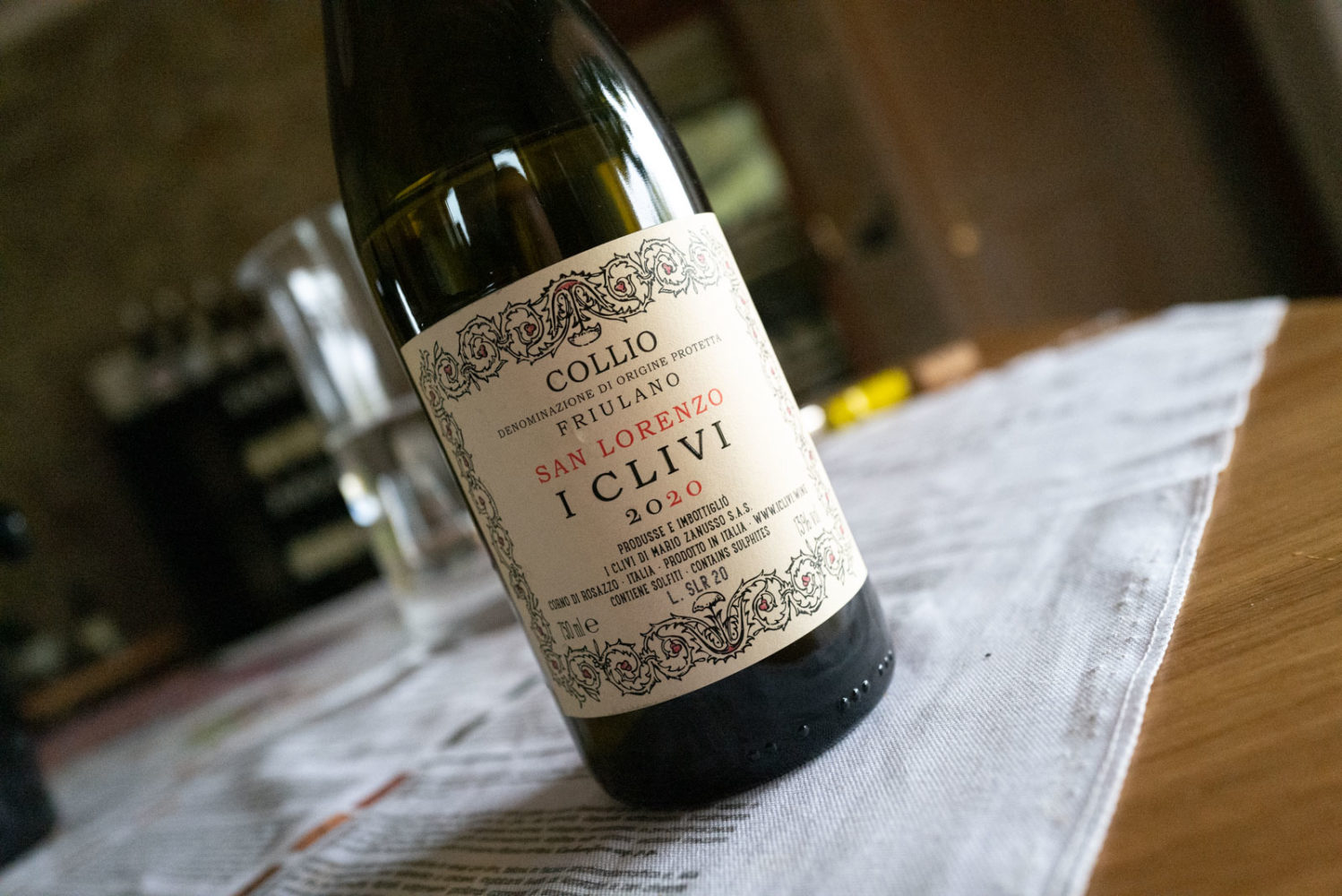
On the surface, I Clivi’s winemaker Mario Zanusso gives us two fantastic wines to compare Tocai Friulano across the two main appellations. The release schedule is a little different, though. The “San Lorenzo” (★★★★ 3/4) from Collio comes out a year later because of the extended time spent on the lees. This is a great example of the richness Tocai Friuliano can achieve when it is grown on the slopes of Mount Quarin above Brazzano. The wine is fruity on the nose, with a wild swing of peach, apple and pear coming at you all at once, as well as a silky, nutty and mellow approach on the palate.
Alternatively, the “San Pietro” (★★★★ 3/4) is from Friuli Colli Orientali, but not a great distance from the San Lorenzo vineyard (a mere river separates the two appellations). It is brighter and more crisp, with a distinctive herbal tone, a relaxed approach on the palate given its youth, and a salty, mouthwatering finish. Another difference: the “San Lorenzo” comes from a yellow-skin clone of Tocai Friulano, while the “San Pietro” comes from a green-skin clone. Because of the clonal as well as winemaking differences, it is not appropriate to say that these two wines represent the profile of Collio vs. Friuli Colli Orientali. But both wines are a great first-taste introduction to the potential of Friulano.
2021 Venica e Venica “Roncò delle Cime” Friulano Collio
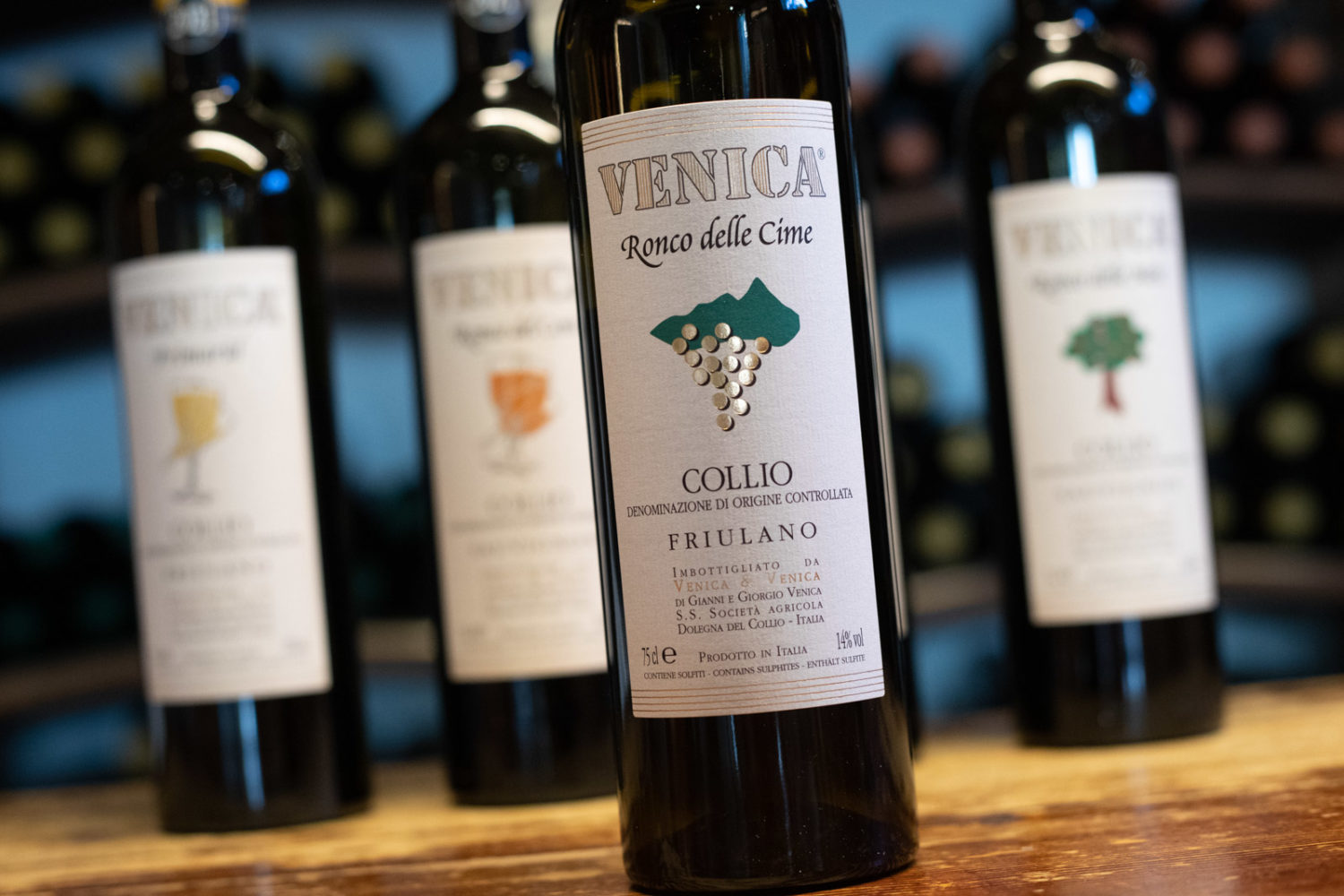
As noted earlier, because of Venica e Venica’s northerly location and distance to the Adriatic Sea, the “Ronco delle Cime” Collio Friulano (★★★★ 3/4) has a great deal of freshness. It is crisp and bright at first, but you soon notice how textural and caressing the wine is as well. Vivid sensations akin to peaches and dried grass, as well as iron, linger on the palate with a beautiful finish.
This wine is from Collio, so in comparing it to I Clivi’s “San Pietro,” you see that the differences between the two DOCs do not always have to do with terroir. This is among Collio’s most brisk, quick-footed, and exciting Friulano.
2021 Livio Felluga Friuli Colli Orientali Friulano
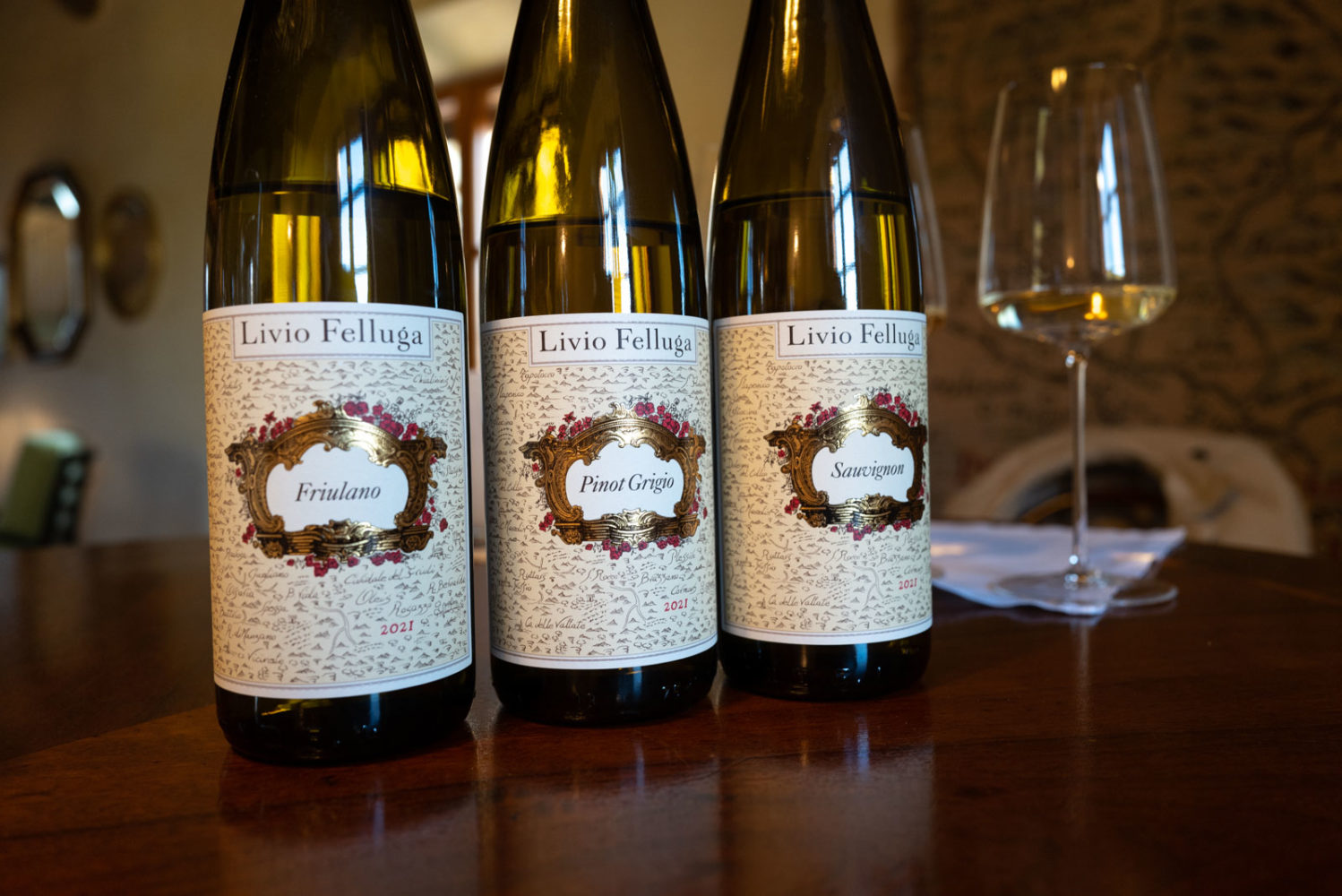
Of the widely available Friulano wines, Livio Felluga’s Friuli Colli Orientali (★★★★ 3/4) stands out the most. Almond is said to be one of the aromatic hallmarks of Friulano, but it is often obscured in the tightness of youthful versions. Not here, as a feeling akin to marzipan lends Livio Felluga’s version a nice sense of depth on the nose. This is a luscious and caressing Friulano, with vibrant yet gentle acidity that leads to a refreshing finish. Another ideal first taste if you want to get into Friulano.
And with a Little Age…
2018 Renato Keber Zio Romi Collio Friulano
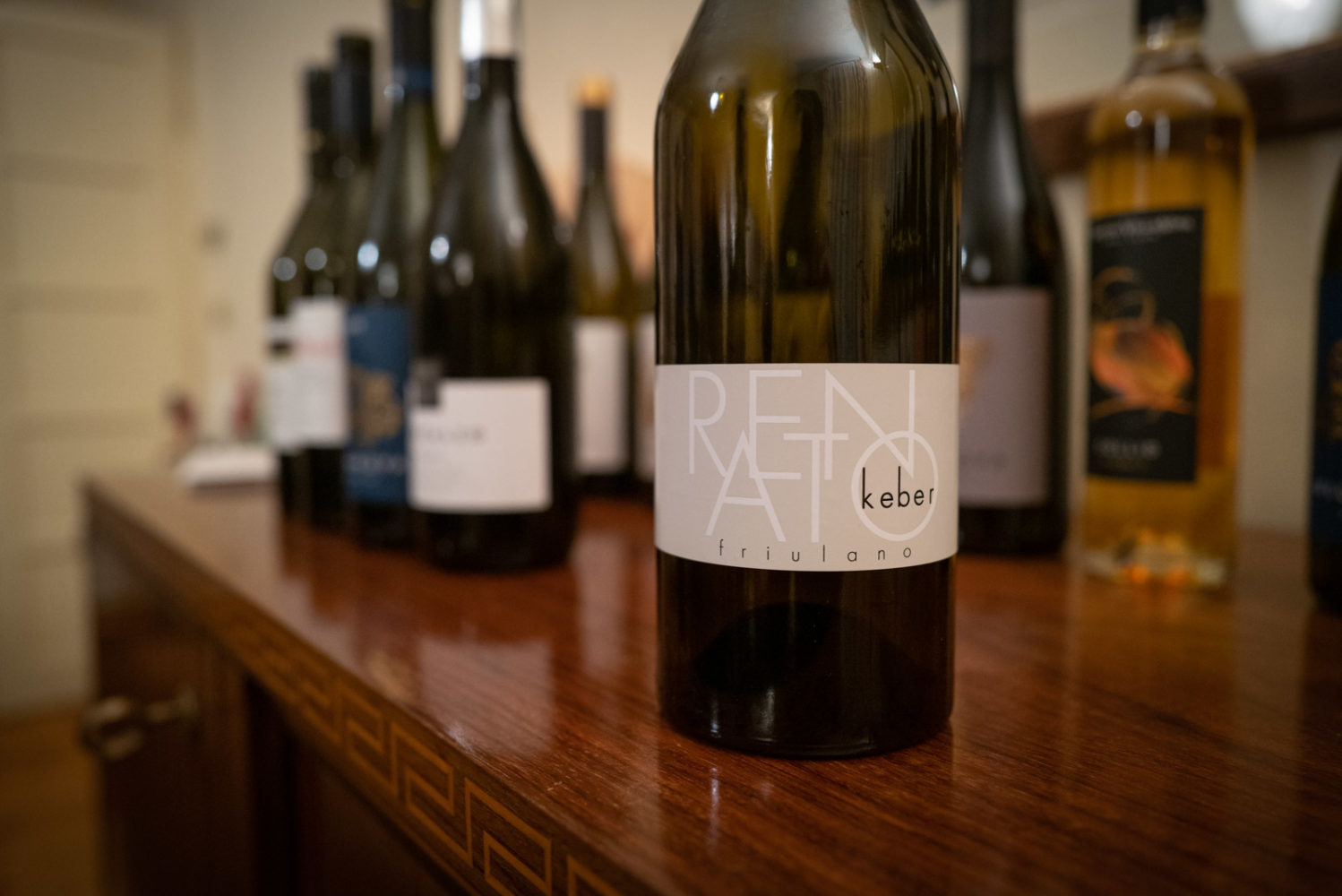
As long-time readers of Opening a Bottle know, we are unapologetic in spotlighting wines that require some searching. The rewards for discovering a rare wine of exquisite beauty are just too great to ignore.
Renato Keber’s “Zio Romi” Collio Friulano (★★★★★) is such a wine. As noted above, it seems to shift into another dimension with a few years of aging, conveying sensations of strawberry and rose petal with savory highlights of persistence on the nose. The sweet citrus quality of the acidity and the lightness of the body showed me how Friulano can be among the greatest white wines in Italy, if not the world.
2018 Raccaro “Rolat” Collio Friulano
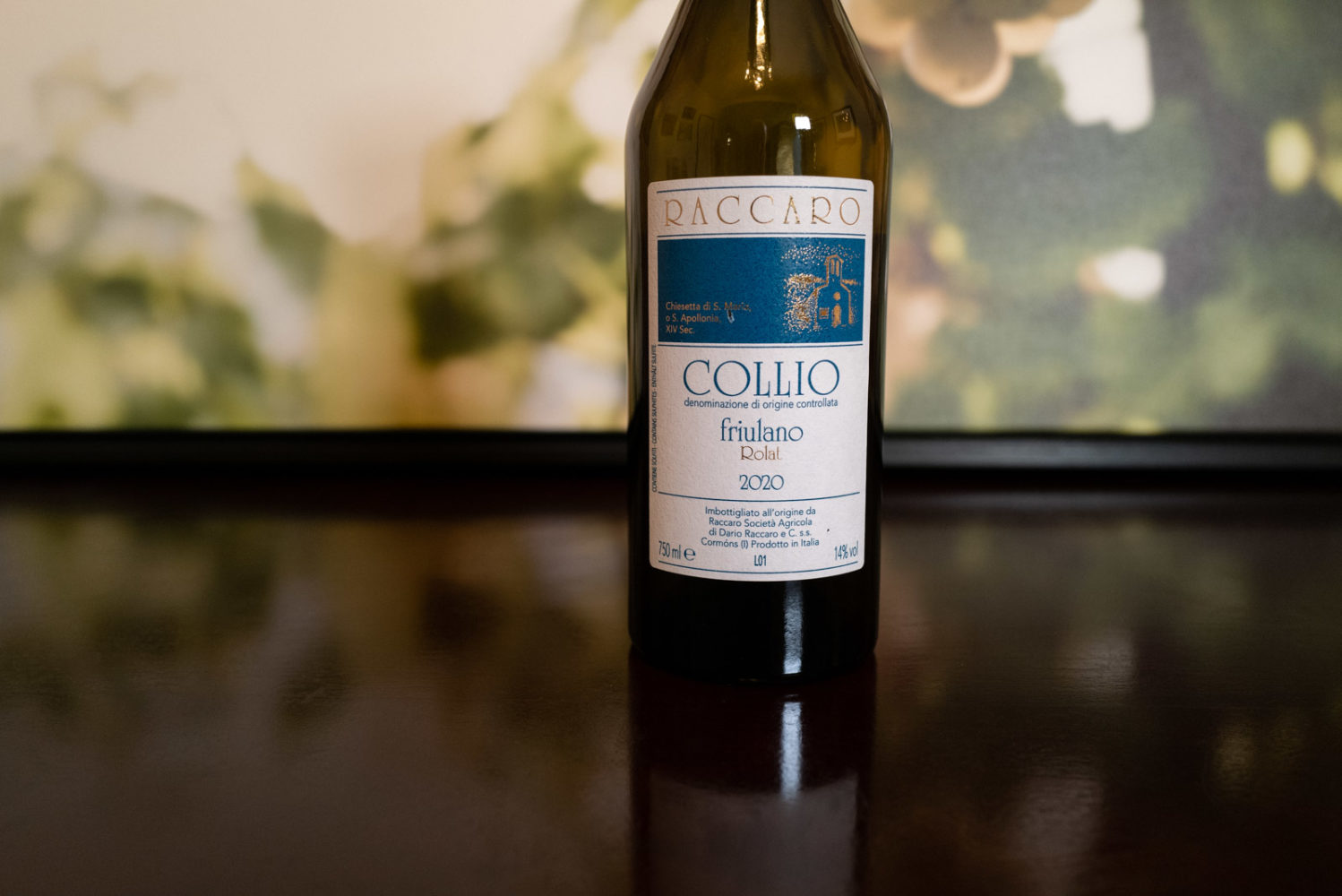
The Raccoro family has a close bond with Friulano and with the vineyards of Mount Quarin, where many believe Tocai Friulano reaches its apex of precision and complexity. Taking its name from the oak forests that drape the upper slopes of the mountain, the 2018 “Rolat” Collio Friulano (★★★★★) shows a remarkable generosity of aromas and flavor, and is expansive yet precise on the palate — a juxtaposition that feels exciting and enticing. This grand wine, along with Borgo del Tiglio’s Ronco della Chiesa, is the one to aspire towards as you explore Friulano. Just do yourself a favor: make sure it has a little bit of age to it.

